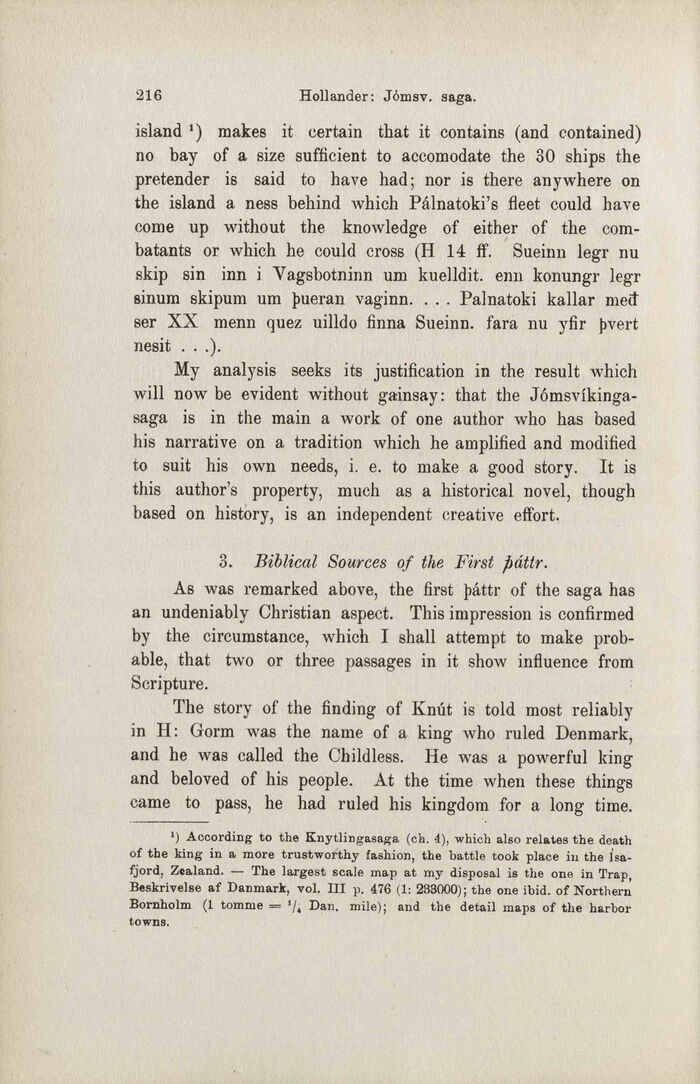
Full resolution (JPEG) - On this page / på denna sida - L. M. Hollander, Studies in the Jómsvíkingasaga - 2. The Composition of the Jómsvíkingasaga - 3. Biblical Sources of the First þáttr

<< prev. page << föreg. sida << >> nästa sida >> next page >>
Below is the raw OCR text
from the above scanned image.
Do you see an error? Proofread the page now!
Här nedan syns maskintolkade texten från faksimilbilden ovan.
Ser du något fel? Korrekturläs sidan nu!
This page has never been proofread. / Denna sida har aldrig korrekturlästs.
216 Hollander: Jómsv. saga.
island 1) makes it certain that it contains (and contained)
no bay of a size sufficient to accomodate the 30 ships the
pretender is said to have had; nor is there anywhere on
the island a ness behind which Pálnatoki’s fleet could have
come up without the knowledge of either of the com-
batants or which he could cross (H 14 if. Sueinn legr nu
skip sin inn i Vagsbotninn urn kuelldit. enn konungr legr
sinum skipum um þueran vaginn. . . . Palnatoki kallar med
ser XX menn quez uilldo finna Sueinn. fara nu yfir þvert
nesit . . .).
My analysis seeks its justification in the result which
will now be evident without gainsay: that the Jómsvíkinga-
saga is in the main a work of one author who has based
his narrative on a tradition which he amplified and modified
to suit his own needs, i. e. to make a good story. It is
this author’s property, much as a historical novel, though
based on history, is an independent creative effort.
3. Biblical Sources of the First páttr.
As was remarked above, the first þáttr of the saga has
an undeniably Christian aspect. This impression is confirmed
by the circumstance, which I shall attempt to make prob-
able, that two or three passages in it show influence from
Scripture.
The story of the finding of Knút is told most reliably
in H: G^rm was the name of a king who ruled Denmark,
and he called the Childless. He was a powerful king
and beloved of his people. At the time when these things
came to pass, he had ruled his kingdom for a long time.
1) According to the Knytlingasaga (ch. 4), which also relates the death
of the king in a more trustworthy fashion, the battle took place in the Isa-
fjord, Zealand. — The largest scale map at my disposal is the one in Trap,
Beskrivelse af Danmark, vol. I ll p. 476 (1: 238000); the one ibid. of Northern
Bornholm (1 tomme — */« Dan. mile); and the detail maps of the harbor
towns.
<< prev. page << föreg. sida << >> nästa sida >> next page >>